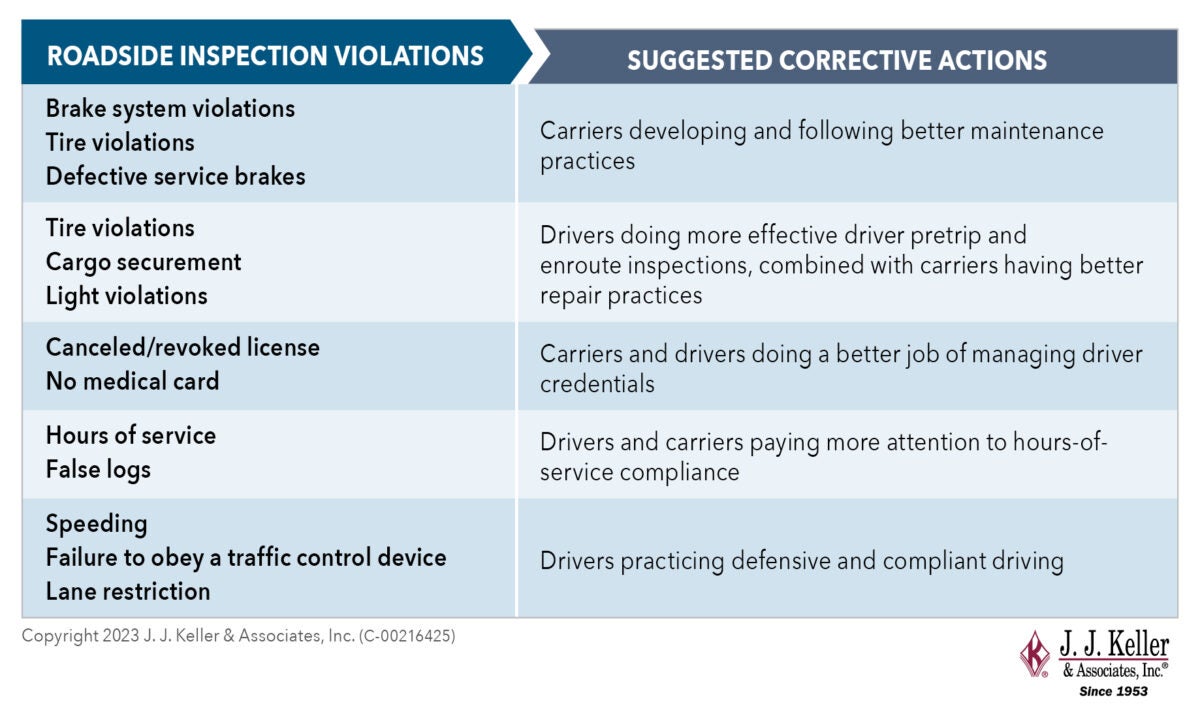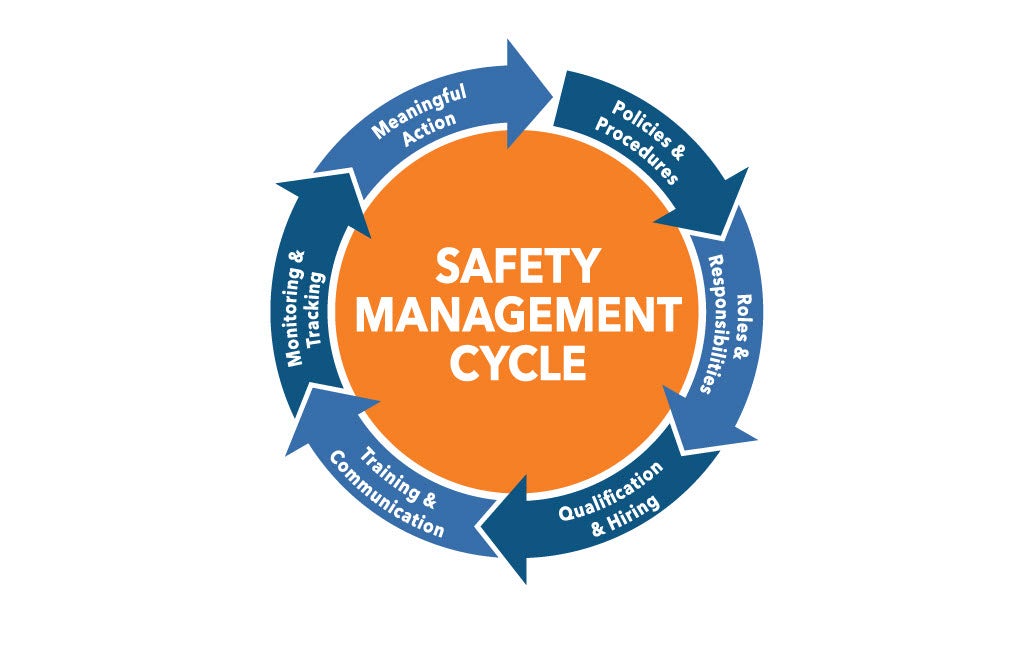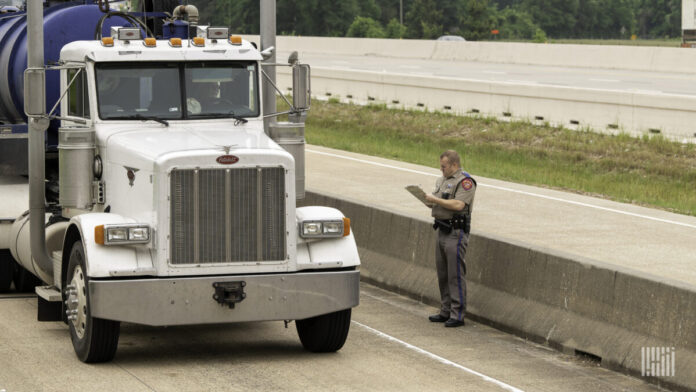Results of the Commercial Vehicle Safety Alliance’s (CVSA) 2023 International Roadcheck are in. The numbers reveal not much has changed since last year, and there is still plenty of room for motor carriers to improve their overall safety and compliance.
The annual three-day inspection effort took place May 16-18 throughout the U.S., Mexico and Canada. CVSA-certified inspectors hit the roads to conduct as many level I, II and III inspections as possible. This year, 59,429 Roadcheck inspections were performed in North America, with most taking place in the U.S.
In the U.S., just over 19%, or around one out of every five inspections, resulted in at least one vehicle out-of-service (OOS) violation. This is just a 4% improvement from last year. Also on par with last year’s numbers were driver OOS violations, which accounted for 6% of total violations.
OOS violations mean the vehicle or driver is restricted from service for a specific period of time or until the issue is resolved. In addition to costing fleets valuable time, the violations carry a higher severity score than others, which ultimately negatively affects their Compliance, Safety, Accountability (CSA) profiles.
This year, the top five OOS violation categories for vehicles include brake systems, tires, defective service brakes, cargo securement and lights. The top driver OOS violation categories were hours of service, false logs, other, canceled/revoked license and no medical card.
Improving safety is a constant effort. Driving meaningful change starts with individual companies taking ownership of their roadside inspection results.
Avoid the fallout of poor inspections
Even after a roadside inspection ends, its impact can linger. Inspections with scored violations stick around on a carrier’s CSA profile for 24 months.
Based on a carrier’s CSA score, the Federal Motor Carrier Safety Administration (FMCSA) may prioritize that carrier for an intervention, which could mean a full onsite audit. If auditors find enough violations during a compliance review, it may end with a demotion of a carrier’s publicly viewable safety rating.
“DOT audits and compliance reviews are not random occurrences. Nearly 90% of audits and compliance reviews are conducted based on CSA scores. Clean inspections reduce CSA scores — your company’s and your drivers’ scores,” said Rick Malchow, industry business adviser at J. J. Keller & Associates Inc. J. J. Keller is the transport industry’s trusted safety and compliance expert since 1953, providing safety and compliance consulting, services and products.
While it’s critical to avoid poor roadside inspections altogether to mitigate your risk of an audit, the next best thing to do is learn from common violations at the industrywide level and within a carrier’s own organization. Carriers should target these areas and take action to avoid future fallout and risks associated with roadside violations, out-of-service events and poor CSA scores.

Luckily, solving the most common roadside inspection violations is within reach for carriers.
“Some believe that the plateauing of the OOS numbers tells us we’ve reached the ‘natural zero,’ the lowest OOS numbers that can be achieved,” said Tom Bray, senior industry business adviser at J. J. Keller. “However, I believe the industry can do better. The most common violations that are written during roadside inspections are the ones that fleets and drivers can impact.”
See the chart below with simple corrective actions for common roadside inspection violations:

Drivers are on the front line of roadside inspections as they are the ones interacting with officers. Making sure drivers understand what officers are looking for and what is expected of them is key. However, all departments, including management, safety and administration (encompassing training department, human resources and dispatch), maintenance and drivers share in the successes and failures of a good or poor inspection. Motor carriers, drivers and maintenance should all do their parts to prepareahead of inspections.
Get to the root of the issue with the Safety Management Cycle
While correcting what caused violations is the first step to fixing immediate problems, violations are often indicative of larger issues. For long-lasting changes, carriers should take a step back to see what is causing the violation in the first place.
The FMCSA’s Safety Management Cycle (SMC) is a tool that is concerned with the broader picture of a motor carrier’s safety operations to understand why a violation or issue is occurring. Enforcement staff use it during Department of Transportation audits, and it’s also useful for motor carriers to implement after a poor roadside inspection occurs.
“Violations could indicate that you don’t have sufficient safety management controls,” explained Malchow. “You can’t go wrong using the FMCSA’s Safety Management Cycle. It provides a comprehensive framework to identify and shore up weak areas by addressing the ‘systems, policies, programs, practices, and procedures used by a motor carrier to ensure compliance … .’”


